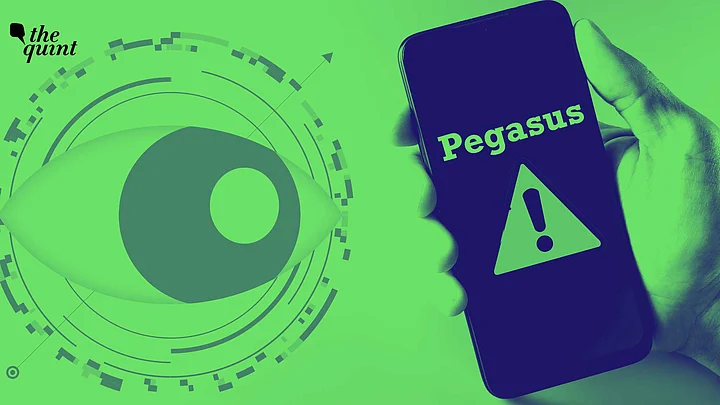The Narendra Modi-led Bharatiya Janata Party (BJP) government observed its eighth anniversary on 30 May 2022 with the kind of celebratory media blitz one may have anticipated. Amidst the feverish analysis of promises made, kept and exceeded, a flagship governance programme, Digital India, finds itself on the fringes of the government’s celebratory priorities.
A critical analysis of Digital India over the last eight years is vital. Digital infrastructure underpins almost every activity today, be it communication, banking, health, learning, governance or entertainment.
Many evaluations, however, tend to stay confined to the usual infrastructural rhetoric of India having 75 crore smartphone users, 80 crore internet users, the Jan-Dhan-Aadhaar-Mobile (JAM) trinity and UPI emerging as a game-changer in the financial technology sector.
Many evaluations, however, tend to stay confined to the usual infrastructural rhetoric of India having 75 crore smartphone users, 80 crore internet users, the Jan-Dhan-Aadhaar-Mobile (JAM) trinity and UPI emerging as a game-changer in the financial technology sector.
Digital India: Look Beyond Dizzying Numbers
According to its official website, Digital India is “a flagship programme of the Government of India with a vision to transform India into a digitally empowered society and knowledge economy”. Launched with much fanfare on 1 July 2015, the programme has three vision areas:
Digital infrastructure as a core utility to every citizen
E-governance and services on demand
Digital empowerment of citizens
On the issue of infrastructure, amidst the dizzying numbers about hundreds of millions of internet and smartphone users, BharatNet, the much-touted rural connectivity project, has been hamstrung by delays.
The National Optical Fibre Network (NOFN) was launched in October 2011 and was renamed as BharatNet Project in 2015.
The project, implemented under the Ministry of Communications, aims to connect all the 2,60,000 gram panchayats in the country with an optical fibre network offering 100 Mbps connectivity. As of 1 March 2022, about 1.72 lakh or two-thirds of the 2.6 lakh gram panchayats are service-ready.
Moreover, in a scathing report in February 2021 on India’s preparedness for 5G, the Parliamentary Committee on IT described India’s current situation as “insufficient” and “laid-back”, and warned that if immediate steps are not taken, India could “miss the 5G bus” just as it did with 2G, 3G and 4G technologies.
In a 125-page report titled “India’s Preparedness for 5G”, prepared after consultations with all stakeholders, the Parliamentary Committee observed that “there are apprehensions that India is set to miss the 5G bus due to lack of preparedness”.
The Leaking ‘JAM’
The Digital India programme aims to scale up digital infrastructure such as internet connectivity, broadband penetration in rural India, access to government services online and efficient delivery of welfare schemes to the country’s masses, among others.
The Jan Dhan-Aadhaar-Mobile, or ‘JAM’ architecture, is a vital cog in this process of welfare delivery and Direct Benefit Transfer (DBT). As of May 2022, over 300 welfare schemes have used this mode of delivery.
The government has consistently touted the JAM trinity as having plugged all leakages in the delivery of welfare as well as having saved the public exchequer over Rs 2 lakh crore. However, facts indicate otherwise.
First, as far as plugging leakages are concerned, thousands of crores of Rupees meant for poor, marginal farmers under the PM Kisan Samman Nidhi Scheme (PM-KISAN) have been fraudulently transferred to ineligible persons across India by misusing Aadhaar numbers.
A report by the author in December 2020 revealed how scammers successfully registered for the scheme on the PM-KISAN portal using many publicly available Aadhaar numbers, including that of actor Riteish Deshmukh.
In a written reply in Lok Sabha in March 2022, Union Agriculture Minister Narendra Singh Tomar stated that more than Rs 4,350 crore has been transferred to ineligible citizens.
Second, over the last eight years, crores have consistently been denied ration or other welfare due to Aadhaar authentication failures, where biometrics like thumb impression haven’t matched.
In March 2018, the fourth year of the Modi government, former UIDAI CEO, Ajay Bhushan Pandey, informed the Supreme Court that Aadhaar had an authentication failure rate of 12 per cent.
Moreover, the eight-year tenure has witnessed a spirited challenge to the constitutional validity of the Aadhaar Act itself before the Supreme Court, with several sections of the statute struck down and deemed illegal.
Data Protection Law: Still a Pipe Dream
The second part of digital India’s evaluation deals with the question of how the government views the digital economy at a policy level and the direction it wants to take India in.
India still does not have a law to protect and safeguard the personal data of its citizens.
We’re among the handful of democracies that still haven’t enacted a data protection law. This is despite a historic Supreme Court judgment in 2017 upholding the right to privacy as a fundamental right.
The draft Bill from 2018 is yet to be passed by Parliament and has got widespread criticism on account of weak safeguards, a wide berth given to the government’s processing of our personal data, and the absence of surveillance reforms.
However, the absence of a data protection law has not deterred the Centre from coming up with dozens of policies around the personal and non-personal data of citizens. This includes the sale of public data, of vehicle registration data, with no provision to appeal any misuse.
Treating Citizens’ Data as ‘Public Good’
Taken together, the pending Bill, which views data essentially as an economic good, and the alacrity with which the State wishes to ‘data-fy’ all aspects of life, provide a clear picture of the underlying philosophy of the Centre towards personal data of citizens.
What the Centre has done in no uncertain terms is signalled that it wishes to treat citizen data as a “public good” as opposed to a “private” good, and which can be monetised or exploited in whichever way the state thinks suitable as long as there is no breach of our data.
The Justice Srikrishna Committee that drafted the Bill also describes it as working towards a “free and fair digital economy”, as does the 2019 Economic Survey of India, which makes a spirited case for using the private data of citizens as a public commodity.
At a time when data mediates our relationship with the government and private companies, the existence of a strong law is vital to ensure that the state acts like a model data controller that ensures both data security and, more importantly, respects the right and liberty of citizens. Any dream of a holistic ‘Digital India’ must be built on a foundation of citizens’ rights, respect for privacy and equitable access to infrastructure. That holistic dream still has a long way to go.
(This is an opinion piece and the views expressed are the author’s own. The Quint neither endorses nor is responsible for them.)
(At The Quint, we question everything. Play an active role in shaping our journalism by becoming a member today.)






